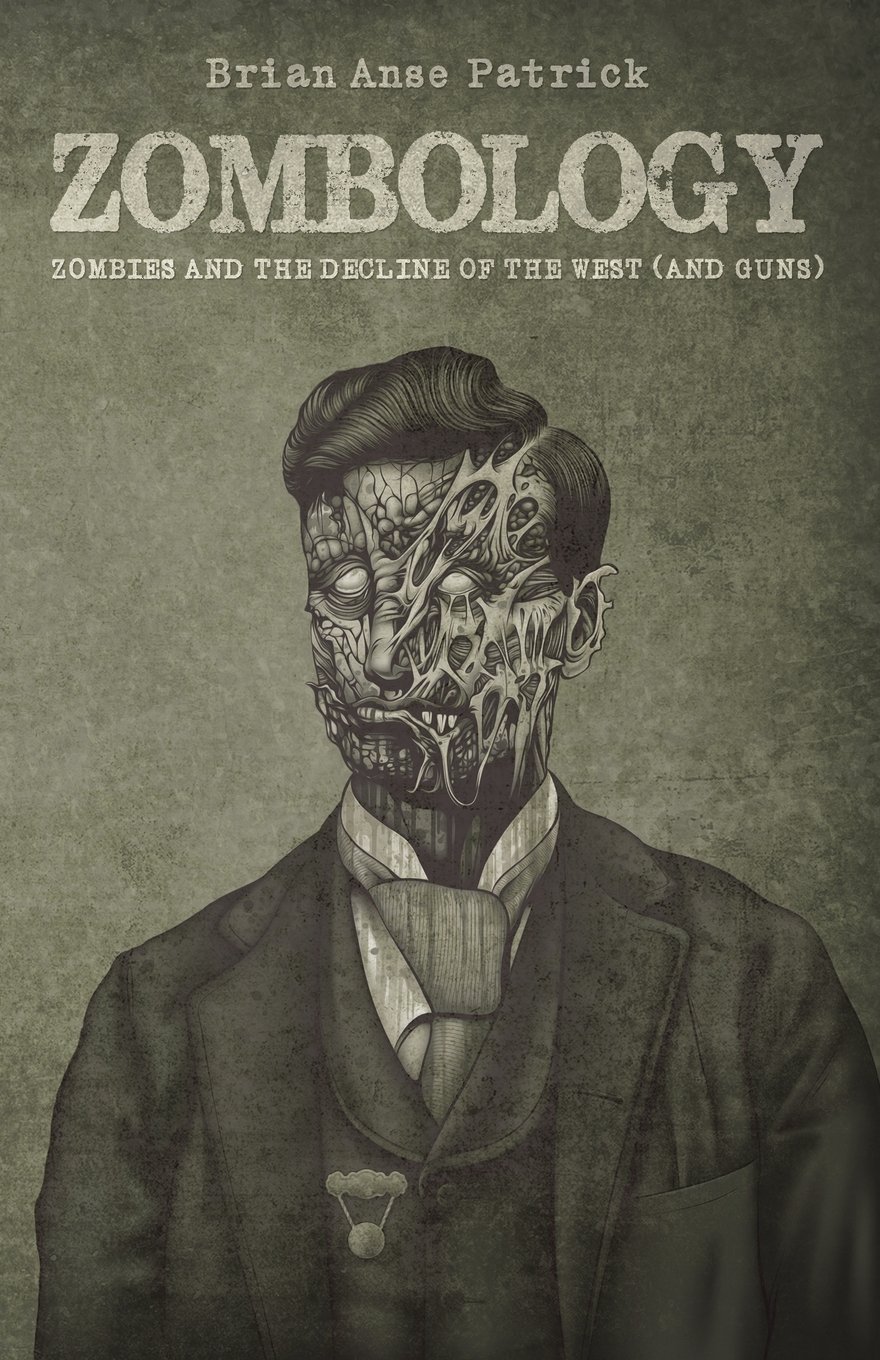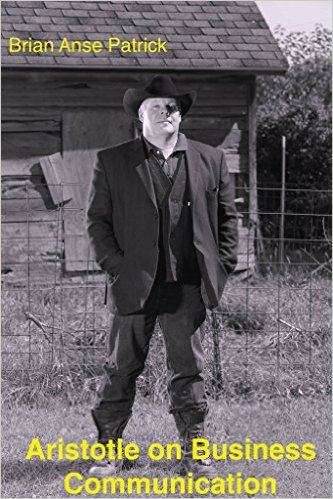Wednesday, June 18, 2014
Ten Commandments of Propaganda Explained on Youtube
Professor Brian Anse Patrick Explains the Ten Commandments of Propaganda on Youtube
You can get a pretty fair idea of what my book The Ten Commandments of Propaganda is all about by watching the short vignettes on each of the commandments that were recently posted on Youtube:
The book of course contains much more in the way of examples and applications.
The videos are produced by Amanda Hurst and hosted by Ohio Supermodel Brooke Wagner. Watch for a soon to be released Youtube video on my new book, Zombology: Zombies and the Decline of the West (and Guns).
Tuesday, June 17, 2014
Ballisti-Cast 6 Cavity Bullet Mold Review
BAP
Ballisti-Cast 6-Cavity .44 Mold in Action
Review: Ballisti-Cast
6-Cavity Bullet Molds.
The byword in cast bullet molds for
decades was the venerable Hensley & Gibbs Co., known for producing superb 6
and 8 cavity molds in what have become classic designs. These included Elmer Keith’s famous semi-wadcutter
in .44 and other calibers, the H&G #68 favored by so many .45 acp shooters
and the old #50 wadcutter that fed so many .38 Special revolvers over the
years. Millions, if not billions, of H&G bullets have been cast and sent
downrange over the years. An H&G 6-cavity bullet mold was once the hallmark of a serious pistol shooter. But
H&G is no more.
The craft of making H&G molds has not vanished from the earth however. It just moved to the hinterlands, North Dakota
, where Ballisti-Cast is located. In
addition to automated casting equipment and large-capacity electric casting
pots, the company acquired and now offers the whole line of H&G bullets in up
to 6-cavity molds. The old “arsenal”
molds of 10 cavities are no more (see corrective note below), however, which is probably just as well
because they required wrists and forearms of steel to operate. Shooters in this degenerate age apparently no
longer have the same kind of preternatural Popeye strength as did our
forefathers. Nowadays many think they have “arrived” if they move up from a 2
to a 4-cavity mold.
Pistol
shooting by its nature requires a lot of bullets. And once you have cast with a quality
6-cavity it’s hard to go back to even a four-cavity; it feels like somebody put
a governor on your car. Properly cared for, these are lifetime molds, maybe
several lifetimes. When H&G was still around, I acquired two 6-cavity
H&G molds in the old #68BB, a 200-grain bevel base design, and the #107A,
a .44 caliber full wadcutter of 245 grains, flat base. I also inherited a 6-cavity #130 in .45
caliber that casts a fine bullet. They
drop from the mold effortlessly.
Interrupted by Grad school, by the time I got around to ordering a
6-cavity #503, the famous Keith .44 semi-wadcutter, I was too late. H&G was defunct.
I
learned about Ballisti-cast when searching online for a used H&G mold. I had my doubts. Making a good bullet mold is
no easy thing. I wondered if the skills
and experience would transfer. In addition to the proper equipment, it requires
a considerable amount of arcane knowledge of the sort that tends to disappear
or degrade in the process of generational transmission. Plus, North Dakota?
North Dakota conjures up visions of ethnic dishes with names like knudle, and
of Angie Dickinson, not bullet molds. Montanans tell North Dakota jokes. Besides, if mold-making of this sort were easy, bullet molds would be
generally available and cheap.
I
ordered two six-cavity molds, the H&G # 503 that I had wanted for so long
and which Ballisti-cast has re-numbered 1103, and the old H&G #78, designed
by the legendary shooter Harry Reeves, so I have read somewhere, and intended
for Smith & Wesson 1950 and 1955 model .45 acp target revolvers, renumbered
as #678. The latter is a blunt SWC
design of approximately 215 grains. One doesn’t
see them around very much anymore, although some of the old time bullseye
pistol shooters liked them. I have fired them in 45 acp target pistols to good
effect with a load of 4 grains of Alliant Bullseye powder. My intention was to
use them in a vintage revolver I had acquired.
The molds cost approximately $300 each complete with handles and sprue
plates.
And
then I waited. And waited some more. I
received an email communication inquiring about my bullet metal alloy and
sizing (.429 and .452, respectively, and an approximate 90/5/5 alloy, lead,
tin, antimony) and billing me for my balance, which I paid. And then I waited even more. Two years ticked by, and I called, finally
getting referred to Bill Sands, interrupting him as he ordered a double whopper
and strawberry shake in the BK drive through (I know this because the cashier
repeated the order). This apparently did
the trick. In a couple of weeks I had my molds.
I got the impression they had experienced turnover and production
scheduling problems. So I worried about
quality.
Bill
Sands came through. The molds looked good. They matched the old H&G molds
perfectly, even the handles. No one had
“improved” or cheapened anything, except on the mold pins, which help align the
two halves. A small precise insert button
and pin combination of some sort of hardened metal or tungsten carbide like
substance now did the job, better I believe.
.44 Mold Right Face
I
tried the .44 SWC first. I lubed
slightly the pins and hinge and sprue pin with NRA 50/50 Alox/Beeswax bullet
lube (an essential step to preserve mold life.) It took a while to warm up, my
first 50-100 bullets were wavy and went back in the pot, but when the mold warmed
it started throwing perfect bullets, sharp in the corners and flat on the
base. The mold was marked .437, which apparently
designates the machined cavity size. The oversize is deliberate and
accommodates the expansion coefficient of the heated lead alloy. They dropped from the mold assisted only by a light tap or two on the hinge with a lead hammer. The bullets
cooled to about .432 and weighed between 247 and 248 grains. When I sized them in a Star Sizer/Luber they effortlessly
went through, coming out at .429. I
loaded 50 rounds in front of 4.3 grains of Alliant Red Dot powder, grabbed my
ancient S&W Triple Lock and headed out back to my range.
One Throw = Six Keith .44 SWCs
At
25 yards, firing at approximately rapid fire cadence, (5-round strings in 10
seconds), one-handed, unsupported and standing on my hind legs like the higher primate that I am, the
rounds impacted exactly where the sights were when the trigger broke. I was happy.
I will try 50-yard slow fire next, but I predict essentially identical
results. See the test target. My intention is to use this load and revolver in
the Harry Reeves revolver match at Camp Perry.
A beautiful bullet!
25 yards Rapid Fire
Next
week or so, after I load up all my .44s, I will try out the new .45 mold.
Note, that in using these
wonderful molds, always use a lead hammer or wooden mallet to knock aside the
sprue plate. Don’t ever peck at one of
these molds with a steel hammer. Keep
them rust free and NEVER clean them with a wire brush and they will last
decades. I make my own lead hammers with a crude mold made from slightly
modified ¾ X ¾ X ½ copper plumbing Tee.
I taper the ends and cut it in half with a hacksaw. For a handle use ½ inch copper tubing, insert
it in the Tee, pour the lead around it, using a piece of metal c-clamped for the
mold bottom, while pouring from the top. This is easy to do and effective. See the photo. This is a nearly perfect weight lead hammer
for bullet casting.
Closeup Lead Hammer and Left Half of Homemade Hammer Mold
Ballisti-Cast
was worth the wait. They came through
with a high quality product. Now I can cast enough .44 bullets to shoot as much
as I would like. Maybe I should try some knudle next and perhaps see what else
North Dakota has to offer.
NOTE/POSTSCRIPT: After writing this review I talked by telephone with Keith of Northern Valley Machine in E. Grand Fork, Minnesota which does the machine work for Ballisti-cast. I learned the following things:
NOTE/POSTSCRIPT: After writing this review I talked by telephone with Keith of Northern Valley Machine in E. Grand Fork, Minnesota which does the machine work for Ballisti-cast. I learned the following things:
- 8 and 10-cavity molds are indeed available for those of you with ambition and powerful forearms.
- The mold pins are made from hardened steel, and as stated above are indeed an improvement over the old plain steel pins on the elder H&G molds that were subject to wear.
- Depending on machining schedules, the turn around time for mold orders is now roughly 3 to 4 weeks.
- Keith casts bullets using 4-cavity molds, so he knows whereof he speaks.
- One of these days on my way out to Montana for elk hunting. I plan/hope to visit Northern Valley Machine in that large land mass called Minnesota. Keith says he will show me how the molds are machined.
Subscribe to:
Posts (Atom)












